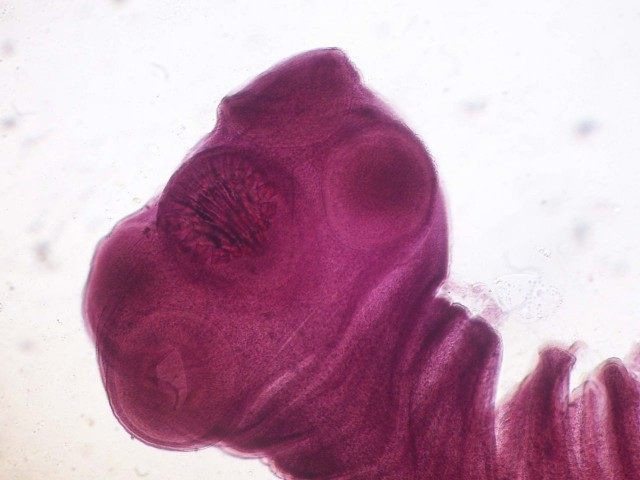A Sacramento State student is lucky to be alive today thanks to doctors who discovered and removed a tapeworm in his brain that was likely caused by eating pork.
“If I would have went in a half-hour later, I definitely wouldn’t be here,” Luis Ortiz told local CBS News affiliate in Sacramento.
Ortiz was rushed to the emergency room by his parents when he was complaining of a chronic headache and started vomiting. Doctors discovered the worm in a cyst in his head and told him it was blocking the flow of water to his brain. Ortiz said the doctors told him they had to operate on him immediately or he would die. His brain is reportedly still recovering.
Doctors at Napa’s Queen of the Valley Medical Center were able to successfully remove the cyst (known in medical terms as neurocysticercosis) and he is now left with a scar on the upper right side of his forehead. The tapeworm could have been contracted by Ortiz from eating contaminated food. This tapeworm happened to be derived from pork. Pork tapeworm (Taenia solium) normally inhabits the muscles of pigs.
According to the Centers For Disease Control and Prevention, the United States sees approximately 1,000 hospitalizations annually for brain infections caused by the pork tapeworm.
The CDC provides an example for how a person might contract neurocysticerosis:
For example, a person eats undercooked, infected pork and gets a tapeworm infection in the intestines. She passes tapeworm eggs in her feces. If she doesn’t wash her hands properly after using the bathroom, she may contaminate food or surfaces with feces containing these eggs. These eggs may be swallowed by another person if they eat contaminated food. Once inside the body, the eggs hatch and become larvae that find their way to the brain. These larvae cause neurocysticercosis.
Due to the lack of good public health systems in the many parts of the world, it is difficult to estimate how many cases of neurocysticercosis there are worldwide. Discovery Magazine published an article on the topic noting that in poor places there are believed to be at least 5 million cases of epilepsy from neurocysticercosis annually. The illness leaves millions paralyzed.
It is reportedly difficult to detect the worms as brain scans show them as white blobs in the brain which could sometimes be mistaken for something else.
Theodore Nash, who is a health professional at the National Institutes of Health in Bethesda, Maryland, says the illness is very easily curable but for the lack of attention given to it. He told Discovery Magazine, “I see this as a disease that can be treated and prevented… but nobody wants to do anything about it.”
Follow Adelle Nazarian on Twitter @AdelleNaz and on Facebook.

COMMENTS
Please let us know if you're having issues with commenting.